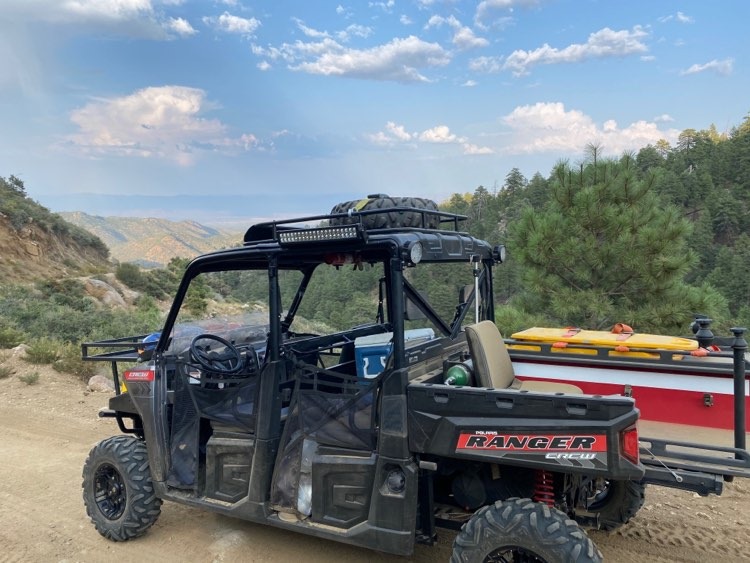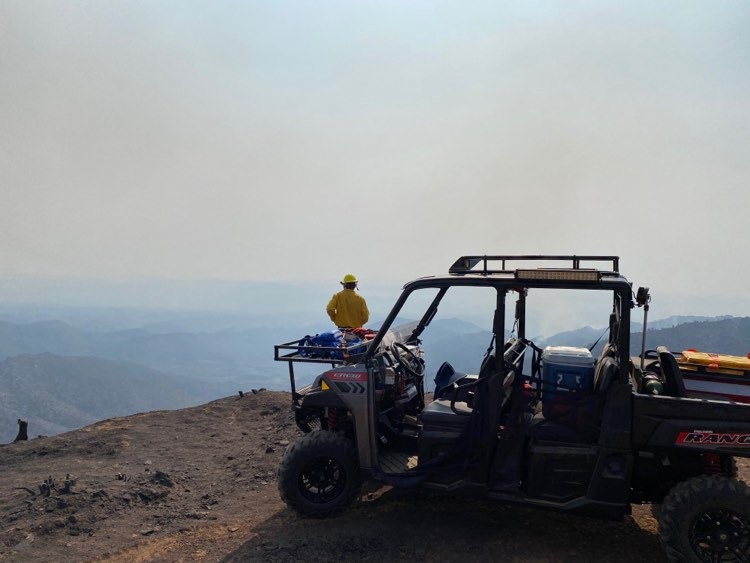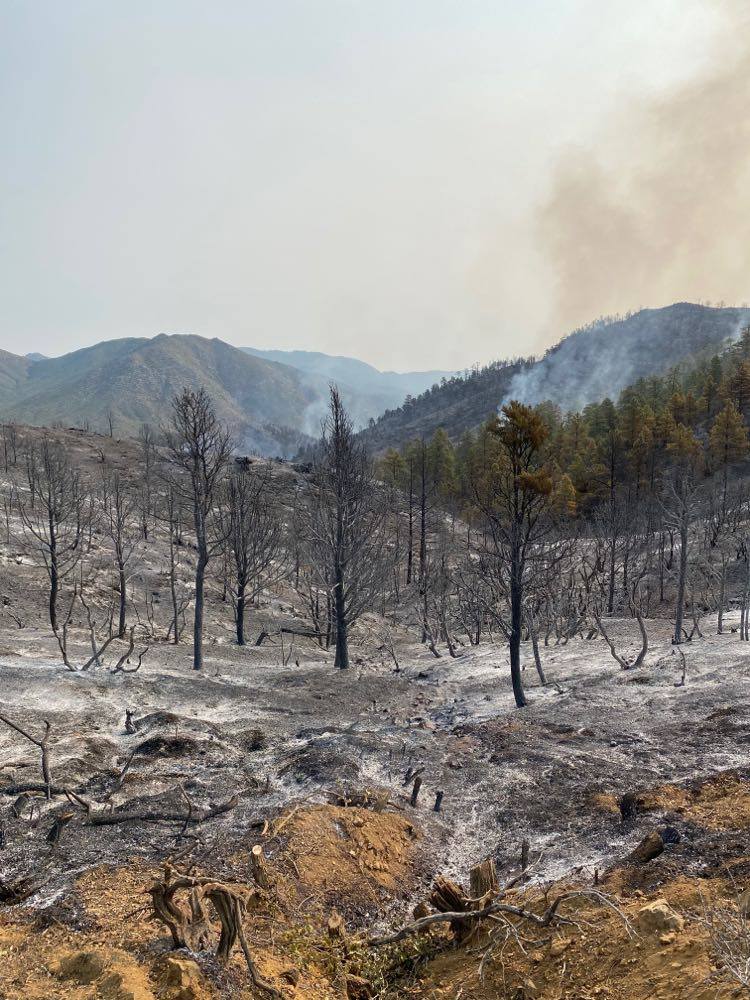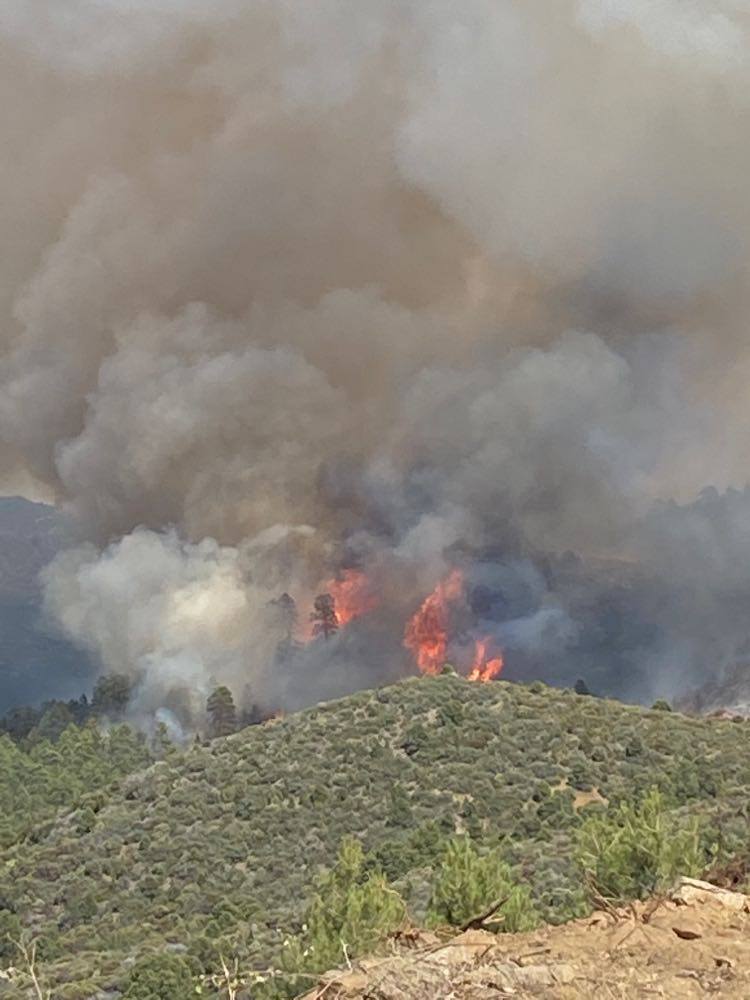By Nicole Matheson
Wild land fire is a danger that plagues much of the United States as well as the world. The Southwest U.S. is a particular hot spot for fire activity throughout much of the year. During the summer months, it’s hard to find a moment when the news isn’t reporting out of control wildland fires throughout the region. The beauty of the Southwest, it’s climate and varied terrain, offers the remarkable postage stamp views, as well a dreamy climate for many residents and travelers. Of course, there is an opposing concern that arises from all of that beauty – heat and dry vegetation.
What is visible of emergency services and the fire department in particular, is mostly what is learned on the news. But what is behind the images as these men and women place their lives upon the line? What are the inner workings of fighting a wildfire?
RiverScene Magazine recently spoke to Battalion Chiefs Bryant Stanec, who oversees finance and administration and Steve Bunn, who oversees operations at the Desert Hills Fire District, to gain a helpful and curious overview to the lives of a wild land fire team and station.
Preparing For Wild Land Fires
Chief Bunn explained that recently, a UTV crew was sent up to the Ridge fire in the Hualapai’s, consisting of a medic and EMT. There is full wild land fire capability in the department — every person is “red carded,” meaning they are all capable of responding to wild land fire incidents.
What is a UTV exactly? Wildland fires often require vehicles that can handle a multitude of rough, treacherous terrains while handling the capacity and load requirements for the job. A UTV, utility terrain vehicle, is a side by side vehicle that fits the bill for mobility and reaching hard to get to spots.
In order to become a wild land firefighter, Battalion Chief Bunn said there are special requirements. In addition to the extensive training required to become a firefighter, more training is necessary. In this case, firefighters initially have to complete two courses and a refresher every year as well as a physical ability check consisting of a three-mile work hike with a 45-pound weight vest on. Many conditions require firefighters to carry specific loads such as additional hose and equipment great distances in when a road makes it inaccessible.
Responding To Calls
Desert Hills Fire Department responds to the calls for help by the state when resources are low. For example, the Ridge Fire in the Hualapai mountains is currently burning. Paramedic Nicolass Wijngaarden, Firefighter David Nelson went up to the Ridge Fire August 20th and are expected to be home first week of September.
“Arizona state lands is responsible for dispatching that out. When the crews get there, they say ‘we need help, we need resources.’ The dispatcher’s send out requests, and then we get a phone call.”
The station is not without special equipment specifically created for wild land fires. In addition to vehicles, which can pump water and maneuver over rough terrain, special hand tools for cutting fire breaks or mopping up hot spots, such as the Pulaski fire, and sharpened shovels are kept in top working order.
Challenges In Our Area
When asked about some of the specific challenges our topography poses, Chief Stanec said the heat is always a concern, first and foremost. In addition to that, the inaccessibility of getting to the location of a fire is considered. Of course, advancements in vehicles has provided more options.
Chief Stanec said, “We’re actually pretty blessed in the Desert Hills District. Our biggest concern is the Wildlife Refuge.” The reason? The density of the unkept growth. While the desert floor can be sparsely vegetated, such as much of Havasu, the dense growth and access issues present a challenge.
What can the general public do? The answers are fairly simple. If you see smoke or fire, report it right away. The cause of most fires getting big fast is waiting too long to report it.






















No Comments » Comments: